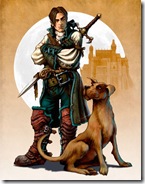Over the past few years, I’ve often thought, “I enjoy video games so much – I should make my own!”, in a way that never occurs to me for films or TV shows. A few years ago, I started writing a text adventure called Super Shoplifter, where you had to steal things for some reason, but it got bogged down in the design phase and never made it to anything playable.
This past weekend, I “finished” my first game: Snowman Quest. I started it in January and challenged myself to complete it within a month. It’s a text adventure, made with the Quest text adventure creator, and although there’s still some polish left to add, I learned a lot from the road here.
Putting the fun in last
A huge part of the fun of text adventures lies in the descriptions of the world, and your interactions with the items and characters inside it.
For Snowman Quest, I focused on the game mechanics first: how to push objects to different rooms, how to open, close, turn on, and make other objects require other objects to function. It sounds simple, especially for a text adventure, but just getting the game up and running and “completable” was my most important task.
The core of the game – dressing a snowman – didn’t change much throughout development, but it wasn’t until the mechanics were done that I settled on the main character and overall mood of the game. I think having something playable was a big motivator for me, as well as helping me to avoid getting bogged down in the “nice to have” elements that are so fun to add.
Ideas come thick and fast
I never really understood the term “feature creep” until my ideas list started including things like “take your wellies off or Dad tells you off for walking mud inside the house”. The game takes place in a garden and house, and at points I also considered introducing travel to other areas: ride your bike to the shops, or go to a friend’s house. I realised that each time I added a room or idea, it had to enhance – not simply expand – the player’s experience.
It was very tempting to keep adding and adding these little touches, and my polish list still has quite a few things, but I’ll stick to things that fit within the existing game world.
Anticipation is everything
When you’re playing a great game, there’s often two kinds of actions: what the developer wants you to do, and what the developer expects you to try and has prepared something fun for. It’s the second kind that proved the most fun, especially as realistically I only expected two players, both people I know very well but with totally different experience levels with text adventures.
Knowing how my players’ minds work was my greatest ally when adding extra touches. That might mean nobody else outside my family would try or ever see these things – and in fact, looking back on my notes on the first playthrough, most of the extra actions were never used – but putting them in was a lot of fun on its own.
Some details matter
I spent a lot of time adding in scenery and background detail, to avoid the fun-killing “I can’t see that” or “I don’t know what you mean” responses.
In the first playthrough, I estimate only about 15% of those details were spotted, and those were in the first few minutes. Once my “subject” started amassing items and exploring more rooms, the details seemingly became less important, as there were clear actions to take. So knowing here to put the emphasis on detail was interesting.
Where challenge comes from
The biggest enemy of a text adventure is guessing the right text string to pull off the action that you know is required.
In my game, two items need to be joined together to create a new one. I added a command for “combine x with y” which also included the synonyms “connect x to y” and “add x to y”. But my player kept using “attach”, which wasn’t in my dictionary, so kept getting an error. That led to a lot of avoidable frustration. Next time, I’ll use a thesaurus to add verbs.
The road ahead
There are still things I want to add to Snowman Quest, and improvements based on the above, but I don’t know if I’ll create another text adventure in the foreseeable future. It was a lot of fun, especially the writing aspect, but partway through the project I discovered Pico-8, a so-called “fantasy console” that has sparked my interest. I’ve never done any coding before – Quest uses dropdowns, and although you can code it yourself, for me that resulted in many frequent errors even getting the basic “msg” command to work – but the idea of creating everything myself is very appealing. I’ve contributed music to others’ projects before, and it’s been a long time since I drew a sprite, but I think it’s a good place to start. So watch this space!
 I haven’t written here for the whole month and with the last few hours of November now ticking away I thought I’d share this bit of gaming news with you.
I haven’t written here for the whole month and with the last few hours of November now ticking away I thought I’d share this bit of gaming news with you.
 My name is James Newton, and this is my website - a collection of my writings about
videogames, music and all my other thoughts.
My name is James Newton, and this is my website - a collection of my writings about
videogames, music and all my other thoughts.